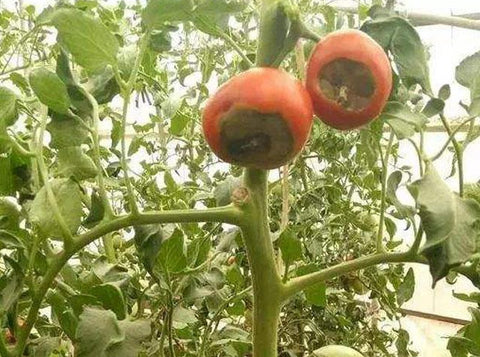Growing Healthy Tomatoes: A Guide to Preventing Blossom End Rot in Galvanized Raised Garden Beds
Tomatoes are a favorite among home gardeners for their vibrant flavors and versatility in the kitchen. However, nothing can be more disheartening than discovering blossom end rot on your prized tomatoes. This common condition occurs when the fruit's bottom end becomes sunken, dark, and leathery, rendering it unsuitable for consumption. Fortunately, with a few proactive measures, you can keep your tomatoes free of blossom end rot, especially when growing them in galvanized raised garden bed. In this article, we'll explore the causes of blossom end rot and provide practical tips to ensure your tomato harvest remains healthy and bountiful.The following content also has some reference value for raised garden beds.
Understanding Blossom End Rot:
Blossom end rot is a physiological disorder caused by a calcium imbalance in the plant. Calcium is essential for cell structure and growth, and when there's a deficiency, the developing tomatoes suffer. Galvanized raised garden bed can exacerbate this issue due to factors such as pH levels and drainage. However, with proper care, you can overcome these challenges and enjoy a flourishing tomato crop.
Tips for Preventing Blossom End Rot in Galvanized Raised garden bed:
Soil Preparation:
- To begin, measure the pH of your soil. Tomatoes prefer a slightly acidic to neutral pH (6.0-6.8). If the pH is too high or too low, it can hinder calcium absorption. Adjust the pH as needed using lime to raise it or sulfur to lower it.
Amend the Soil with Organic Matter:
- Add organic matter or well-rotted compost to the soil. This enhances the availability of nutrients, water retention, and soil structure. Healthy soil promotes robust plant growth and can aid in preventing blossom end rot.
Balanced Fertilization:
- Provide a balanced fertilizer that includes essential nutrients, including calcium. While calcium deficiencies are not always directly related to soil calcium levels, a well-rounded fertilizer helps maintain overall plant health.
Proper Watering Practices:
- Inconsistent watering is a common contributor to blossom end rot. Keep up a regular watering regimen to ensure that the soil is continuously damp but not soggy. Galvanized raised garden bed may dry out more quickly, so monitor the soil moisture levels closely.
Mulching:
- Apply a layer of organic mulch, such as straw or shredded leaves, around the tomato plants. Mulch helps regulate soil temperature, reduce evaporation, and prevent fluctuations in moisture levels. This can be especially beneficial in raised garden bed where moisture retention might be a challenge.
Use Calcium Supplements:
- Consider adding a calcium supplement to the soil, especially during the early stages of fruit development. Crushed eggshells, gypsum, or commercial calcium supplements can be incorporated into the soil or applied as a foliar spray.
Proper Spacing:
- Ensure that you space your tomato plants adequately. Crowded plants can compete for nutrients, leading to uneven calcium distribution. Follow the recommended spacing guidelines for the specific tomato varieties you are growing.
Monitor for Pests and Diseases:
- Check your tomato plants frequently for indications of disease and pests. Infestations and infections can stress the plants, making them more susceptible to blossom end rot. Implement integrated pest management practices to keep your plants healthy.
Conclusion:
Growing tomatoes in galvanized raised garden bed can be a rewarding experience with the right care and attention. By addressing the factors that contribute to blossom end rot, such as soil pH, nutrient balance, and water management, you can enjoy a plentiful harvest of delicious, blemish-free tomatoes. Remember to stay vigilant, implement preventative measures, and enjoy the fruits of your labor in a thriving and productive garden. Happy gardening!


